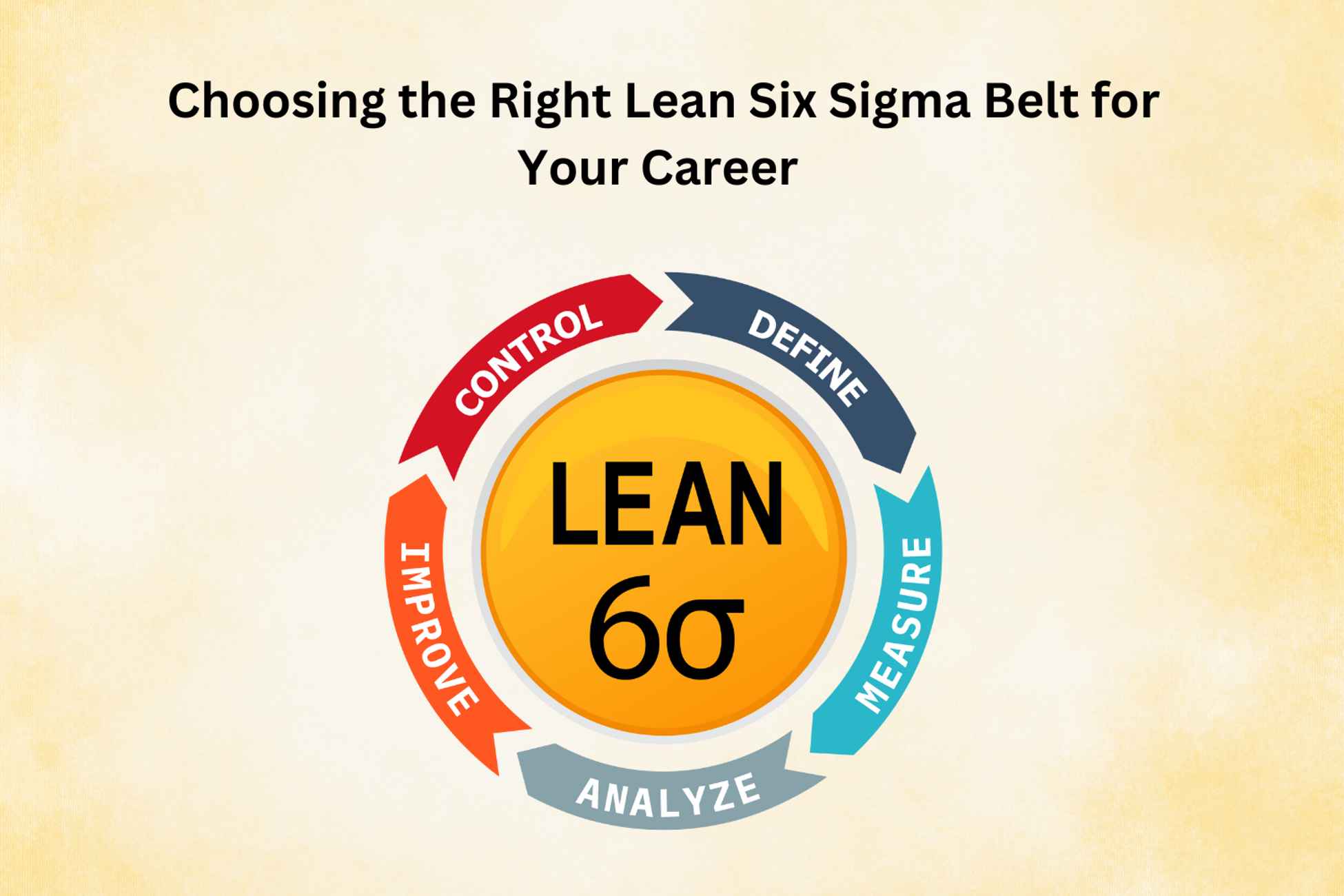Organisations constantly strive to improve across all their business verticals. They focus on optimising efficiency, streamlining workflow, and diminishing errors.
To achieve excellence, the Lean Six Sigma Belts have sprouted as an essential method. Therefore, Lean Six Sigma Training is helpful for choosing the right belt for your career by considering the factors you need to check.

Table of Contents
- Understanding Lean Six Sigma
- The Six Sigma Belts
- Advantages of Lean Six Sigma Certification
- Choosing the Right Lean Six Sigma Belt
- Conclusion
Understanding Lean Six Sigma
Two process improvement techniques, Lean and Six Sigma combines and result in Lean Six Sigma methodology.
Lean values with maximising efficiency and minimising defects by discarding valueless activities. This process involves streamlining processes, reducing errors, and optimizing resources. This result in delivering more value with less effort.
Six Sigma refers to an approach used to enhance productivity and improve workflows by detecting and eliminating errors. The ultimate objective of Six Sigma is to increase efficiency and achieve a certain level of quality that is nearest to perfection.
Also Read: Working for Yourself: A Brief Guide to Successful Freelancing at Home
The Six Sigma Belts
Lean Six Sigma belts are certification levels that helps to indicate the employees’ or professionals’ skillset and experience held by the professional. It demonstrates their ability and knowledge. Here are the Lean Six sigma belts in order:
White belt
White belt professionals possess general problem-solving skills that can support overall projects. They are aware of the primary Six Sigma concepts. This belt is generally for newcomers.
Yellow belt
Here, individuals participate as project team members. They can review processes for improvement. These professionals have gained an understanding of DMAIC.
Green belt
This level of expertise requires at least three full years of employment. The professionals have hands-on experience on projects involving certain levels of business transformation, and this level also assists black belt projects.
Black belt
This level deals with professionals who lead problem-solving projects. They can also coach diverse project teams as they acquire work experience in core knowledge areas. The black belt level also requires proof of completion of at least two six sigma projects.
Master Black belt
These professionals coach black and yellow belts. They have mastered the domain of Lean Six Sigma belts and possess at least five years of experience as a Black belt or at least ten years of experience handling Black belt projects. They participate in high-end strategies.
Advantages of Lean Six Sigma Certification
Here are some benefits of the belts:
Organisational Advantages
Listed below are some of the organisational advantages:
- Improved productivity: An improved productivity rate is evident with fewer errors and time saved.
- Reduction in training cost: Eliminating defects minimizes waste, resulting in low production costs and higher profit margins.
- Boost in client confidence: Implementing lean Six Sigma, the processes are more streamlined with minimal to no number errors. This results in better production and service quality, boosting client confidence.
Individual Advantages
Listed below are some of the individual advantages:
- Gain credibility: As a highly respected course across all industries, it enhances your credibility as an employee. This advantage makes you well suited for multiple verticals.
- Professional growth: All these belts are steppingstones towards a more significant career opportunity. With enhanced skills, there’s always a better prospective waiting for you.
- Enhances strategy and decision-making abilities: The belts teach you to view processes systematically and strategically, improving your decision-making potential.
- Improves leadership skills: As a professional with a grip on the belts, you’ll often need to lead projects, which will enhance your management and leadership skills.
Choosing the Right Lean Six Sigma Belt
It is essential to know that completing these certifications in the given order isn’t compulsory. You must understand which belt aligns with your desired career trajectory to choose the right Lean Six Sigma belt for your career.
There is no concrete answer when it comes to “How to choose the right belt.” However, considering current responsibilities, preferences, budget, and goals could be some determining factors. Short—and long-term career goals should be considered when choosing between the belts.
Also Read: Business Management 101: Overcoming the Quantity vs. Quality Conflict
Conclusion
If chosen wisely, the Lean Six Sigma belts can be genuinely beneficial. In today’s dynamic setting, a Lean Six Sigma certification can boost career prospects, opening multiple doors of opportunities. Consider the key factors mentioned while choosing the right belt for better results!




